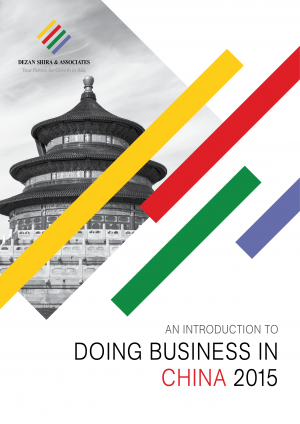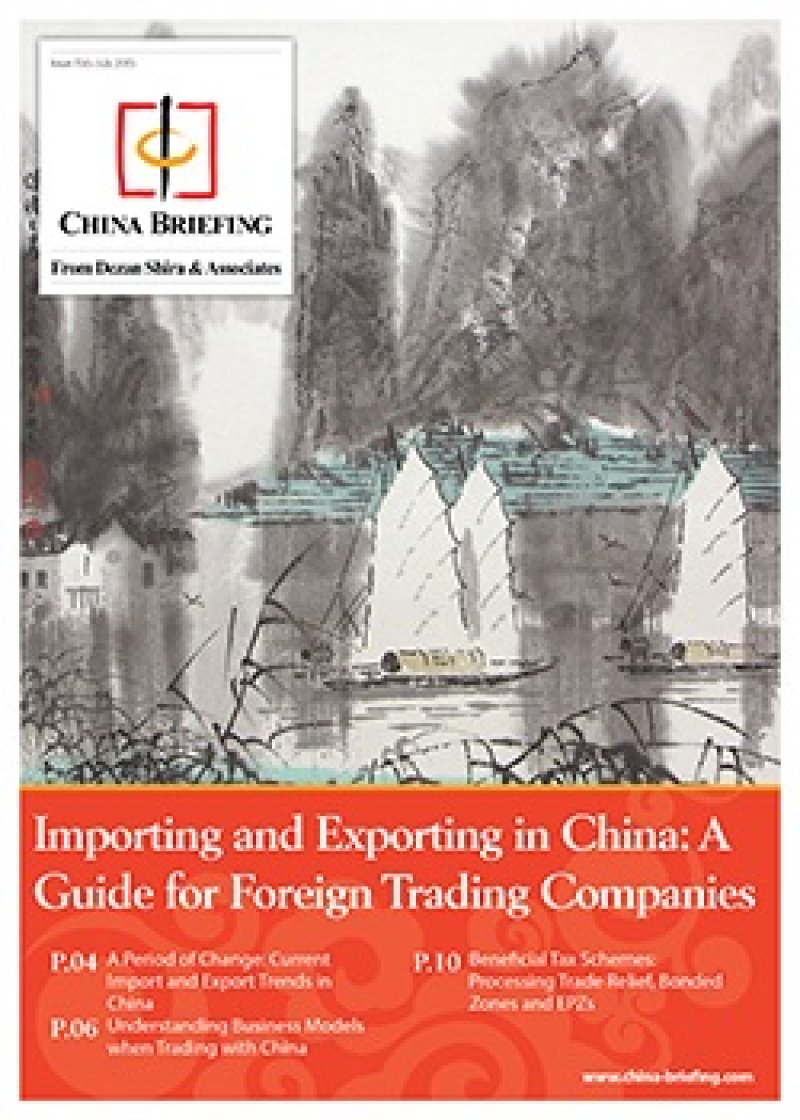Investing in China’s Biotech Industry
By Roy K. McCall
 Biotech investment is driving not only services outsourcing (vs. manufacturing) to China, but also accelerating China’s growing leadership in innovation – central to the country’s 13th Five Year Plan 2016-2020. In the previous Five Year Plan, the central government injected US$2 billion in subsidies to spur biotech innovation, creating expectation for electron microscopes and spectrometers directed toward discovering therapies.
Biotech investment is driving not only services outsourcing (vs. manufacturing) to China, but also accelerating China’s growing leadership in innovation – central to the country’s 13th Five Year Plan 2016-2020. In the previous Five Year Plan, the central government injected US$2 billion in subsidies to spur biotech innovation, creating expectation for electron microscopes and spectrometers directed toward discovering therapies.
China’s pharmaceutical market is approaching US$150 billion with roughly a third, or US$50 billion, in biotech drug discovery. This compares to America and Europe’s regional pharmaceutical markets of about US$350 billion each, with approximately half devoted to biotech and drug discovery. China is currently demonstrating an impressive inflection point or shift away from low risk contract work in sales and generics (“biosimilars”) development – to novel therapy research.
China has in recent decades served mainly as a contract researcher (CRO) for chemistry, as opposed to biology and health therapies. Given the US$1 billion cost in developing new bio-therapies in the U.S. and Europe, big pharmaceuticals have been eager to reduce costs and therefore outsourced to China. China’s big three CROs benefited, including WuXi AppTec (formerly Wuxi PharmaTech – based in Shanghai), ChemExplorer (Shanghai) and Pharmaron (Beijing). In addition to most leading global pharmaceuticals with offices in China, foreign CROs in China include Brunswick, Viva and Xenobiotic Labs. The problem for China is that foreign brands dominate the high end market.
 RELATED: Pre-Investment and Entry Strategy Advisory
RELATED: Pre-Investment and Entry Strategy Advisory
China is now spearheading its own biology research – from preclinical research through therapy testing. In the past decade, China’s SFDA (State Food and Drug Administration – absorbed into the Health Ministry) approved therapies from Shenzhen Kexing Biotech, Shenzhen Sibiono GeneTech, Shanghai Sunway Biotech, and Shandong Simcere Medgenn Biopharmaceutical. Other emerging biotechs include Shanghai Fudan-Yueda Bio-Tech, Shanghai Genomics, Shanghai Benon Bio-Engineering, Shanghai Huaguan Biochip, Shanghai United Cell Biotech, Shenzhen Beike Biotechnologies, and Shenzhen Chipscreen Biosciences. Guangzhou Pharmaceuticals, Xiuzheng Pharmaceutical, Yangtze River Pharmaceutical, Harbin Pharmaceutical, Shanghai Pharmaceutical, North China Pharmaceutical and Weigao are all established leaders.
In vaccine production, China is dominant. State-owned CNBG (China National Biotec Group) has an 80 percent domestic market share in vaccines and is already the world’s largest vaccine producer.
One of the obstacles inhibiting the hundreds of private diagnostic reagent providers from integrating backwards or upstream, into more sophisticated therapy product research, is the constrained revenue from their primary (90 percent) market – price controlled hospitals in China.
Assisting them to develop more sophisticated research are firms such as Amoytop Biotech (Xiamen) and HD Biosciences (Shanghai/La Jolla). AbMart (Shanghai) and AbPro Labs (Boston/Shanghai) accelerate the monoclonal antibody discovery from the typical 9 to 1.5 months.
Once breakthrough prospects attract market attention, two ways for investors to exit include private M&A (generally comprising in aggregate 10 percent of GDP in developed markets as a rule of thumb) or the prestigious but less common IPO (one percent of GDP). TPG and Carlyle are among the PE firms active in healthcare investments.
While on the lookout for more blockbusters coming out of China, the timing is good to invest with strong research teams taking advantage of best-in-class research tools from firms such as Abpro Labs.
Roy K McCall is a CFA and Harvard MBA with three decades experience in Asia and the Middle East. At Peking University’s executive MBA program, Roy was the first instructor to launch his proprietary text (Measuring, Managing, Improving Performance) in the mid-1990s on the Web for students. He is currently writing from the Washington DC area.
|
Asia Briefing Ltd. is a subsidiary of Dezan Shira & Associates. Dezan Shira is a specialist foreign direct investment practice, providing corporate establishment, business advisory, tax advisory and compliance, accounting, payroll, due diligence and financial review services to multinationals investing in China, Hong Kong, India, Vietnam, Singapore and the rest of ASEAN. For further information, please email china@dezshira.com or visit www.dezshira.com. Stay up to date with the latest business and investment trends in Asia by subscribing to our complimentary update service featuring news, commentary and regulatory insight. |
![]()
Importing and Exporting in China: a Guide for Trading Companies
In this issue of China Briefing, we discuss the latest import and export trends in China, and analyze the ways in which a foreign company in China can properly prepare for the import/export process. With import taxes and duties adding a significant cost burden, we explain how this system works in China, and highlight some of the tax incentives that the Chinese government has put in place to help stimulate trade.
 An Introduction to Doing Business in China 2015
An Introduction to Doing Business in China 2015
Doing Business in China 2015 is designed to introduce the fundamentals of investing in China. Compiled by the professionals at Dezan Shira & Associates, this comprehensive guide is ideal not only for businesses looking to enter the Chinese market, but also for companies that already have a presence here and want to keep up-to-date with the most recent and relevant policy changes.
 Selling, Sourcing and E-Commerce in China 2016 (First Edition)
Selling, Sourcing and E-Commerce in China 2016 (First Edition)
This guide, produced in collaboration with the experts at Dezan Shira & Associates, provides a comprehensive analysis of all these aspects of commerce in China. It discusses how foreign companies can best go about sourcing products from China; how foreign retailers can set up operations on the ground to sell directly to the country’s massive consumer class; and finally details how foreign enterprises can access China’s lucrative yet ostensibly complex e-commerce market.
- Previous Article China Investment Roadmap: the e-Commerce Industry – New Issue of China Briefing Magazine
- Next Article Handling Mass Layoffs in China’s Manufacturing Sector










